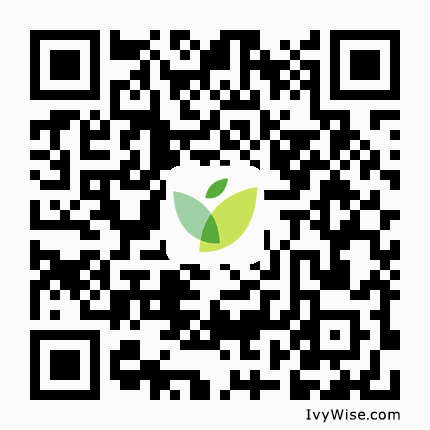
Check out our Just Admit It! Podcast
IvyWise counselors Rachel and Zach share their top tips on how to create a manageable and balanced college list on the Just Admit It! college admissions podcast, giving listeners expert insight from former admissions officers.
With so many facets to the college application process, it can be difficult for students and their families to even know where or how to begin. A good starting point — and one of the most important pieces of the application process—is formulating a balanced college list. Junior year is the ideal time to start, as it will leave you time to do your research, visit campuses, and eliminate schools that may not appeal to you as much as you originally thought.
Your college list is the barometer for the rest of your college prep going forward, so it’s important to start refining your priorities, evaluating where your profile falls relative to other applicants and working towards finalizing the list of colleges to which you will apply.
College is a big investment, and in order to ensure you’re getting the most out of the experience and the best ROI, you need to apply to a well-researched and thoughtful list of colleges where you can thrive and graduate in four years. With nearly one-third of students transferring colleges at least once, this is especially important in order to avoid the time and money lost trying to transfer out of a college that wasn’t a great fit, to begin with.
Here’s how juniors can begin to refine and polish their balanced college lists.
Research, Research, Research!
We can’t stress the importance of research enough. Start with a list of all the colleges that you think are interesting, but you’ll need to dig deeper to find out if these schools will truly fulfill your individual needs. Learn everything you can about the schools that have piqued your interest, and even look for other, lesser-known schools that may also meet your personal, academic, and financial needs.
Research courses, majors, minors, professors, activities, and other factors that are important to you on the school’s website. Interested in engineering? Learn everything you can about the courses you might take, professors you might study with, and what extracurriculars or clubs are available to engineering students. Also follow prospective colleges on Facebook, Twitter, Instagram and other social media channels, as that is a great way to stay up to date on campus news, events, and admissions information.
Additional sources like college guidebooks (like the Fiske Guide to Colleges), current students and alumni, and college visits are also helpful. As you do your research, purge any schools from your list that do not meet your needs. Ideally, you will end up with a list of 12 to 15 best-fit schools — each of which you would be happy to attend!
Researching and following colleges on social media also helps to demonstrate interest, which is important when it comes time to apply. Become an expert in each school you’re interested in and be sure you’re able to articulate exactly why each school is a great fit for you, why you want to attend that school, and what you can contribute to the campus community — this will also come in handy when you’re writing your college essays.
Consider Fit
Harvard might sound like the ultimate college to apply to, but is it really a good fit for you? If you prefer larger research universities on the west coast then, no, it won’t be a great match. You have to consider more than name brand and “reputation” when refining your college choices. Sure, Middlebury College is an excellent school, but if you’re interested in engineering, it’s not going to have the academic programs you’re looking for, thus making it not a great fit for you.
Colleges on your balanced list should be good academic, social, and financial fits. Choose colleges that meet your needs, both inside and outside of the classroom; that way, you’ll have a variety of colleges to choose from where you can be happy and successful.
Visit
One of the best ways to determine if a college is the right fit for you is to visit, ideally when classes are in session. Attend information sessions with admissions officers, tour the campus, explore the surrounding community, and, if possible, spend the night in a freshman dorm to get a real feel for the college life there.
Refining your college list is about identifying what’s important to you and the opportunities and programs offered by colleges that meet those priorities. A visit can go a long way to help you make those assessments. Do you like the campus atmosphere? Is it located too far from a city — or perhaps too close to one? Are you comfortable with the dorms? Is the class size appropriate for your needs? Sometimes a visit can be a gut-check for a college you’re on the fence about.
Develop Your Own Rankings
Do you have a pretty solid list but you’re not sure how to compare each school to one another? Develop your own rankings based on your personal preferences and priorities in order to assess each college on your list. Conventional rankings lists give little insight into how each college fits students’ needs, so students shouldn’t consider those when making decisions about where to apply.
Instead, create a chart that lists the factors you consider most important, i.e. location, academics, size, etc. and after researching and visiting each college, place a “+” in the box if you liked that certain aspect of the college, a “–“ if you didn’t, or a “0” if you’re not sure. Tally up the “+” at the end to get your rating for that school.
| College | Academics | Location | Size | Extracurriculars | TOTAL |
| College X | + | + | 0 | + | 3 |
| College Y | + | + | – | – | 2 |
| College Z | – | – | + | 0 | 1 |
By creating a visual representation, you can see which colleges actually meet your needs and which don’t. This can help you refine your list and remove any schools that on the surface seem great, but may not actually be a good fit for you.
Keep Your College List Balanced
Once you’ve started your research and created your own rankings, meet with your high school college counselor to evaluate and narrow down your list of schools. Keep in mind that colleges will evaluate your profile in relation to your peers at your high school, so your counselor can likely provide some insight here. A candid discussion about your course load, grades, extracurricular activities, and admission goals will allow your counselor to honestly assess your college list and also allow them to suggest some additional schools that might be a good fit. Your counselor is a great resource and can help you identify some schools of interest that you may not have considered before.
It’s important to challenge yourself and aim high, but a list heavy on colleges with single-digit admission rates can leave you with few options come enrollment time. Make sure you identify a wide range of “likely,” “target,” and “reach” colleges to consider.
- “Likely” schools = student’s academic profile is significantly stronger than the middle 50 percent of students who are typically admitted.
- “Target” schools = student’s academic profile is similar to that middle 50 percent.
- “Reach” schools = student’s academic profile is not as strong as the middle 50 percent.
All this information can be found on the school’s admissions website. If you’re not able to easily locate it, call the admissions office.
It’s okay to reach for that “dream” college but keep realistic expectations. On the flip side, don’t include a “likely” you’re not that thrilled about just to have a “backup.”
Again, if all the colleges you choose are great fits, you’ll be happy to attend any of them. “Likely” colleges shouldn’t be considered “fallbacks” or colleges you’ll just attend for one year only to try to transfer into your top-choice college later. All of the colleges on your list, whether a far reach or a very likely, should be schools you’d love to attend.
Keep Your College List Manageable
With over 3,000 colleges and universities in the U.S., the options available to students can sometimes be overwhelming. Couple that with single-digit admission rates at some of the country’s top-tier universities, and many students may feel that in order to get into a great school they will need to explore every college available, sometimes applying to upwards of 40 or 50 schools. This is not a smart application strategy, as applying to a high volume of colleges diminishes the quality of each application. Not to mention that without time to thoroughly research dozens of colleges, it’s unlikely that every school will be a great fit.
Ideally, your balanced college list should include a total of no more than 12-15 best-fit target, reach, and likely colleges. Any more than that and the quality of the applications and essays will suffer, thus reducing your chances of admission. It’s important to keep your college list manageable in order to minimize stress and maximize your chances of admission to your top-choice colleges.
Keep an Open Mind
There’s no one-size-fits-all when it comes to choosing a college. It’s a personal decision that should be based on the factors that are most meaningful to each student. Before adding any school to your college list ask yourself, “Why this school?” Students should be able to answer this question about all of the schools on their college list. And you won’t be the only one asking that question — many colleges have a variation of the “Why this college?” question on their application. Once a student gets to know a college through intensive research, visits, and other experiences, then they can decide if that school will be a good fit, regardless of reputation or where it falls on a publication’s ranking.
Try this: Cover up the names of the schools and simply discuss the academic course of study, professors, activities, student population, resources, the surrounding community, etc., and try to envision yourself at that school. Could you see yourself enjoying classes and extracurricular activities there? Could you see yourself at that school for the next four years? When you focus on the experiences, a college might be cut even though its name was a very attractive one.
At IvyWise, we work with students to help them identify and apply to a balanced list of best-fit colleges where they’ll be happy and thrive. There are many schools where students can be successful, and our expert counselors will help you find the schools that are the best fit for your interests, goals, and finances. For more information on how we can help you find the best-fit schools to apply to, contact us today.


